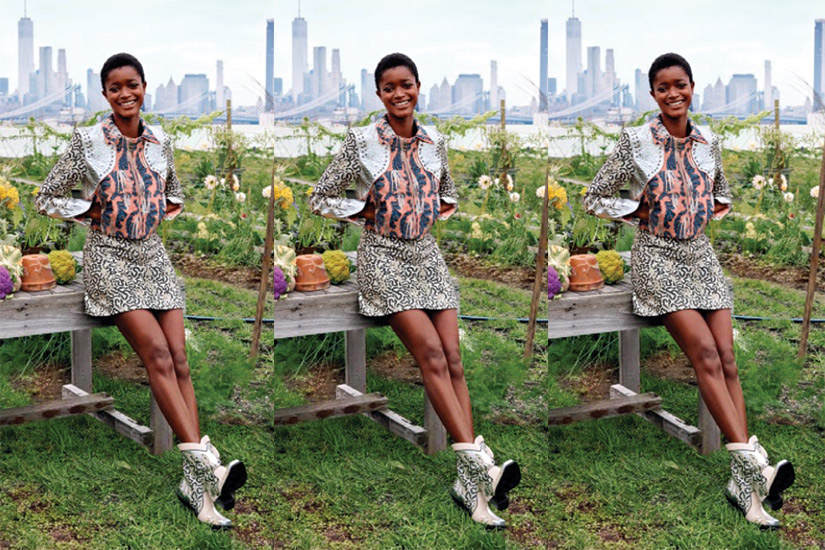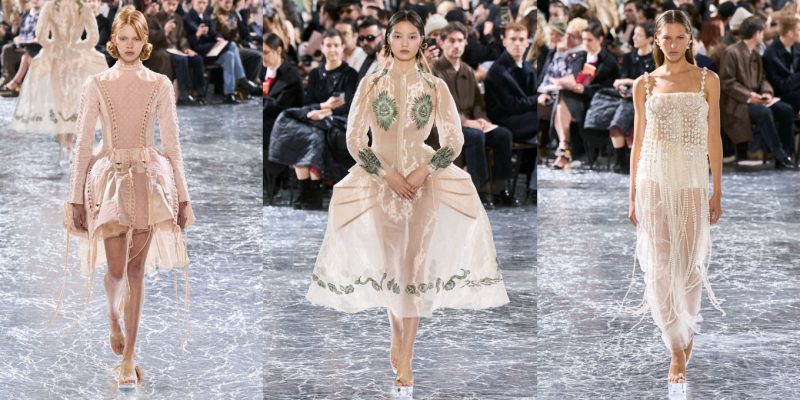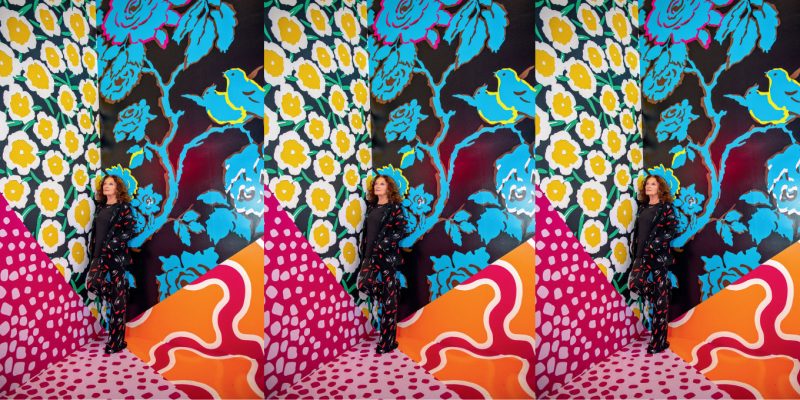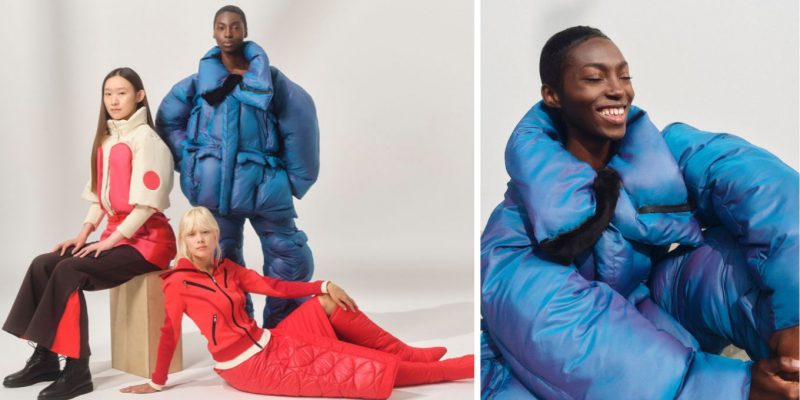“We can’t continue to do business like we have for the past 30 years,” says Ann-Sofie Johansson, H&M’s creative adviser, at the launch of the brand’s latest Conscious Exclusive collection (out April 11) in Berlin. Johansson is dressed in a softly tailored suit that was cut from organic linen, her rhinestone and tortoiseshell earrings are made of recycled plastic and old cutlery, and the soles of the bow slides on her feet were algae once upon a time. These are all part of the new line, which is, fittingly, inspired by the glory of nature.
Now in its ninth season, the Swedish fashion giant’s sustainably made capsule has come a long way. “We couldn’t use any embellishments at the start,” says Johansson. “Now we have sequins that are 70-percent recycled, and we have so many more fabrics.” For the first time, the brand has used pineapple leather, which appears on the cuffs and shoulders of a cropped moto jacket and on a pair of kicky cowboy boots, and orange fibre, which is made with waste from juice production and is the material used to create a dramatic corseted top with balloon sleeves.
Along with these innovative textiles, the brand is also focusing on circularity — reusing discarded goods instead of creating new ones. To that end, 57 percent of H&M’s current textiles are recycled, and the brand vows to reach 100 percent in 11 years. These efforts have received the stamp of approval from Eva Kruse, CEO of the Global Fashion Agenda, a forum on fashion sustainability. “If the fashion industry stays on its current trajectory, emissions from textile production will rise by more than 60 percent by 2030. H&M is leading by example when it comes to forging a sustainable path,” says Kruse. After all, most of us wear clothing from mass retailers, so big companies can — and must — make a big impact. Talk about feel-good clothing.
This article first appeared in the April 2019 issue of ELLE Canada.








